Exploring Vault Testing Sites in Fallout: A Deep Dive
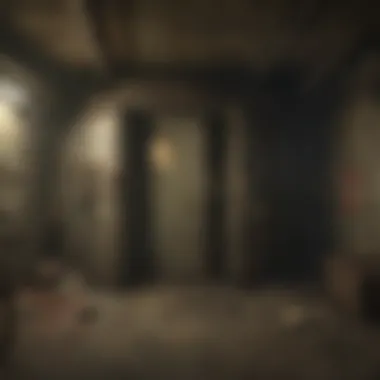
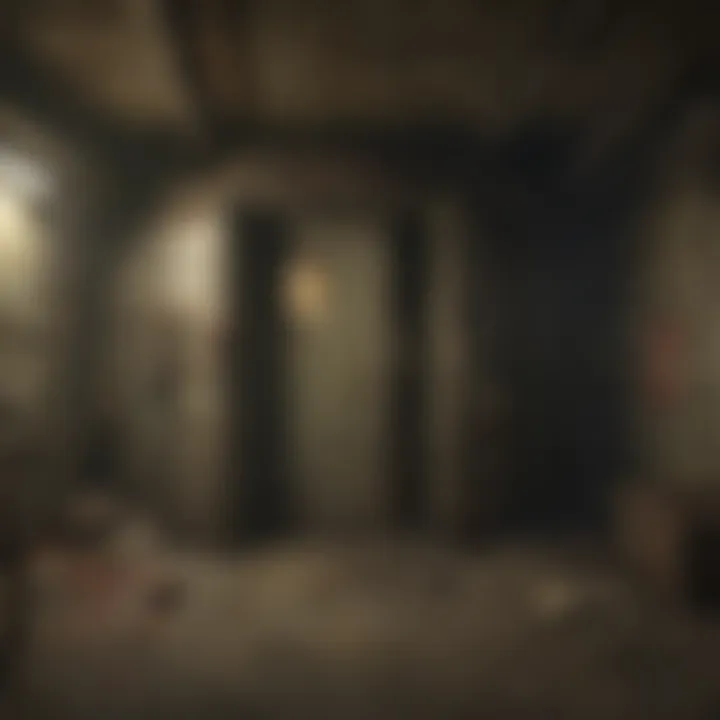
Intro
The vaults scattered throughout the Fallout universe serve as more than mere shelters from the nuclear apocalypse; they are intricate laboratories of social and psychological experiments conducted by the United States government. Each vault tells a story, a glimpse into mankind's desperation and questionable ethics in the face of catastrophe. These subterranean bunkers, operationally designed to protect the fragile remnants of humanity, often harbor dark secrets and unsettling legacies.
In this article, we’ll explore the various vault testing sites that dot the different installments of the Fallout series. From their architectural quirks to their sinister purposes, each vault reflects the fears and aspirations of a society on the brink. It's important to recognize that these forsaken places aren't just settings for in-game quests; they are critical components of a larger narrative that speaks to themes of survival, morality, and the human psyche. By diving deep into the lore surrounding these vaults, we can unearth layers of meaning that enhance our appreciation for the Fallout franchise.
Lore Insights
Overview of the Fallout Universe
The Fallout universe is a post-apocalyptic world arising from the ashes of a global nuclear war. The timeline shifts back to the 1950s, maintaining a retro-futuristic aesthetic filled with visions of advanced technology and a naive optimism that seems almost laughable today. As players traverse the desolate wastelands and abandoned cities, they encounter remnants of the pre-war society — from a plethora of radioactive creatures to crumbling remnants of once-busy train stations. The glaring disparities between the idealistic world of the past and the brutal struggle present in the wasteland frame the player’s journey and the underlying narrative.
Key historical events in the Fallout timeline
- The Great War (2077): A nuclear conflict that resulted in the devastation of most of Earth’s surface.
- The establishment of Vault-Tec: A company charged with creating and managing the vaults, often with dubious motives.
- Emergence of the Brotherhood of Steel: Founded in the aftermath of the Great War, this faction focuses on preserving technology and knowledge.
- Rise of the Institute: A shadowy organization focused on the advancement of science, often through morally questionable experiments.
These events lay the groundwork for the volatile relationships that exist in the wasteland today.
Deep dive into the backstory of major factions and characters
Factions like the Raiders, The Enclave, and The Minutemen are more than just obstacles; they are reflections of the various survival strategies employed in the fallout world. Each faction's philosophy offers insights into how different groups perceive morality, power, and community. For instance, The Minutemen represent a more democratic approach to survival, striving for unity in the chaos, while The Enclave embodies an elitist vision, believing that they alone hold the key to humanity's future.
These intricacies deepen the lore and enrich the gameplay experience, making players question their alliances and the motivations behind their chosen paths.
"The vaults are not just shelters; they are mirrors reflective of our deepest fears and desires."
As we peel back the layers surrounding vault testing sites, we begin to see them not only as gameplay mechanics but as pivotal storytelling vehicles that engage players on thematic levels beyond mere survival.
Next Steps
To fully immerse ourselves in this exploration, we will shift focus to the disconcerting elements of vaults—examining the bizarre experiments conducted within and the outcomes that ripple through the overarching story of Fallout.
Prologue to Vault Testing Sites
The world of Fallout is as battered and beleaguered as a used car on a long drive to nowhere, yet it offers a treasure trove of lore worth delving into. At the heart of this post-apocalyptic narrative are the vault testing sites—places that embody the curious amalgamation of hope, daring experiments, and unforeseen consequences. By examining these sites, we gain not just a better understanding of their functionalities but also insights into the psychological and social experiments that unfolded within their walls. Each vault is a window into humanity's flaws and aspirations, shaped by the hands of the sinister Vault-Tec Corporation.
The significance of vault testing sites in Fallout cannot be overstated. These constructed sanctuaries were not merely survival pods but rather elaborate experiments designed to test human behavior under duress. They reveal how societal norms can fracture when individuals are thrust into abnormal conditions, often leading to drastic and bizarre outcomes. Understanding these elements lays the groundwork for comprehending the game's rich narrative while also enhancing the player's experience as they encounter the ghosts of these isolated habitats.
The Concept of Vaults in Fallout
Vaults in Fallout are more than a refuge from the nuclear apocalypse; they represent a microcosm of society, a controlled environment where various psychological and social hypotheses were put to the test. Each vault was constructed with a unique premise, often driven by the peculiar ideas of its creators. For instance, while some vaults focused on social dynamics, others experimented with fear or resource management. This variation underscores not only the imaginative breadth of the game's designers but also the quintessential themes of survival, sacrifice, and the human condition.
"In the insanity of isolation, Vaults became breeding grounds for the bizarre—each with its own living narrative."
The conundrum arises when players wander into these vaults, discovering remnants of both civilization and its collapse. The eerie silence within their corridors hints at the stories that played out, tales of triumphs and tragedies shaped by the vault dwellers’ choices. Interactions with the environment lead to encounters that highlight the consequences of their predecessors' decisions, creating a tapestry of interconnected stories that enrich the Fallout experience.
Purpose and Design of Vault Testing Sites
The fundamental purpose behind vault testing sites extends far beyond mere survival; it reflects an unsettling exploration of human behavior. Vault-Tec's designers imagined these spaces as laboratories to push the boundaries of social sciences and psychology. From the outset, testing sites aimed at understanding how people react to catastrophic conditions, whether through isolation, forced cooperation, or engineered rivalry.
The design of these vaults varies significantly, tailored to specific testing criteria. Some feature intricate social structures, while others are barren shells where anxiety thrives. Noteworthy examples include:
- Vault 111: Known for its cryogenic stasis, it examines the effects of long-term isolation and the psychological impact of being removed from society.
- Vault 76: Designed with an optimistic vision of rebuilding the world, this vault tests how inhabitants adapt to life afterward—as pioneers of a new dawn.
- Vault 19: A stark reminder of how conflict can rip apart a community; the testing rounds here emphasized paranoia and fear through resource scarcity and isolation.
In summary, the vaults serve as a narrative device that frames the player’s journey, laying bare the delicate threads of human nature under stress. In the process, they beg the question: can humanity thrive when stripped of its civilized veneer, or do we regress into chaos? This duality is what makes the exploration of vault testing sites in Fallout profoundly intriguing.
Historical Context of Vault Testing
The history behind vault testing in the Fallout universe weaves together various threads that reveal both the ambitions and the follies of human ingenuity. Valuing this background helps in comprehending the broader implications of the experiments conducted within those subterranean chambers. Examining this historical context gives players deeper insight into the motivation of the Vault-Tec Corporation and highlights how the sociopolitical climate of the pre-war era set the stage for the fallout of these actions. Moreover, it allows readers to connect the dots between past ambitions and the resulting dystopian atmosphere lurking above ground.
The Origins of Vault-Tec Corporation
Recognized as a key player in the bleak narrative of Fallout, the Vault-Tec Corporation was founded in the late 2050s. Initially envisioned as a company dedicated to creating safe havens underground, the reality of their operations was more layered. The company didn't merely focus on safeguarding the population from nuclear threats; instead, it capitalized on fears to secure its position in a rapidly changing world. Vault-Tec’s mantra, “We’ll keep you safe,” rang hollow for many as their practices came to light.
At its core, Vault-Tec developed its empire with the underlying notion that experimentation was essential. Their vaults functioned as social experiments, testing various theories of human behavior under extreme conditions. While many entities were focused solely on survival, Vault-Tec aimed to craft a narrative, one that intertwined technology with human psychology. Yet, amid the groundbreaking protocols, ethical lines were often crossed. What seemed a noble idea morphed into what became known as the "social death" of the vaults—trying to control human lives through systematic oversight.
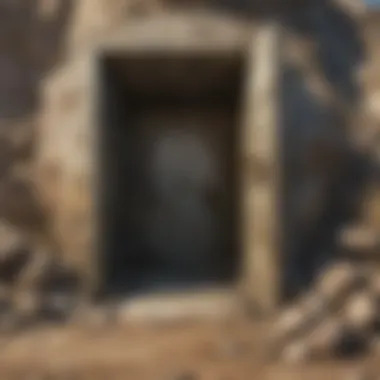

Sociopolitical Climate of the Pre-War Era
To fully grasp the reasoning behind the extensive vault testing, it’s crucial to delve deep into the sociopolitical climate surrounding the pre-war era. The world was teetering on the edge of disaster; the specter of nuclear war loomed large as global tensions escalated. During this tumultuous period, people were eager for solutions, especially ones that promised security and stability.
In this atmosphere of paranoia, Vault-Tec cleverly marketed their vaults to governments and civilians alike, painting the vault as a sanctuary where families could escape the “threats” of the outside world. Additionally, society was desperate for hope, and the promise of technological advancement offered a fleeting glimpse of salvation.
Yet, underlying all this optimism were profound ethical dilemmas. As the company negotiated contracts and influenced policymakers, many of their practices became increasingly questionable. This 'ends justify the means' mentality set the stage for a variety of inhumane experiments that would unfold in the vaults. The government’s endorsement of these practices, driven by the fear of obliteration, allowed Vault-Tec to run rampant without proper oversight.
“The fear of destruction can often lead to the willingness to sacrifice morality for survival.” - Anonymous
Through understanding these layers of history, players gain richer perspectives into the motivations driving Vault-Tec. It paints a grim picture of humanity’s willingness to place survival above ethics, a theme that resonates throughout the Fallout series. From the company’s origins to the sociopolitical context, the dark side of vault testing is intimately linked with a society desperate for control over an uncertain fate.
Architectural Features of Vaults
The architectural design of Vaults in the Fallout universe plays a crucial role in shaping the overall experience and storytelling within the games. The meticulous planning behind each vault reflects both the extreme measures considered necessary for survival and the insecurities of the society that created them. These designs are not just practical shelters but also settings for intricate psychological experiments and social experiments carried out by the Vault-Tec Corporation.
Vaults themselves are the epitome of isolation in a post-apocalyptic world. They resemble giant underground bunkers, each with unique designs tailored to specific environmental experiments or social experiments. This begs the question: why such diversity in design? The primary reason lies within the specific objectives Vault-Tec had for each site. Depending on the intended experiment, certain architectural features were prioritized to control and study the inhabitants effectively.
Design Principles and Layout
The layout of each Vault is heavily influenced by the social engineering principles that guided its creation. For example, the central atrium often serves as a gathering space but can also double as a method of control, promoting specific interactions or discouraging others. The layout is circular, leading to a focus point that metaphorically represents the society controlled within its walls.
- Centralized Atriums: This serves as a heart of the Vault where social interactions take place, encouraging hierarchy or segregation as deemed necessary by the overseers.
- Access Control Points: Varying levels of restricted access characterize many Vaults. These serve to control movement and monitor behavior of the inhabitants effectively.
- Living Quarters: Compact but functional, each living unit is designed for maximum efficiency, reflecting a utilitarian approach that downplays personal space in favor of survival.
The interconnecting hallways and sectors create a labyrinthine environment, adding layers of confusion and psychological strain. It shows that these designs serve a dual purpose: to be practical while simultaneously maintaining an environment conducive to data collection and behavioral observation.
Technological Innovations in Vault Construction
The technological advancements employed in the construction of Vaults cannot be overlooked. Vault-Tec utilized cutting-edge materials and methods that, at the time, were revolutionary for their durability and safety. The primary focus was on protection against both the external nuclear threat and the internal dynamics of human behavior.
- Reinforced Materials: Walls of Vaults were constructed using advanced alloys and composite materials that can withstand harsh external conditions, ensuring the safety of those within.
- Environmental Control Systems: Each Vault is equipped with a highly complex system designed to regulate air quality, temperature, and radiation levels. These innovations were not just life-saving but also pivotal for the experiments on human psychology and society.
- Automated Systems: Many Vaults had self-sustaining power supplies and robotic systems that facilitated daily chores and maintenance tasks, allowing the human inhabitants to focus on the social experiments running around them.
Despite the apparent safety and comfort these designs provided, the reality often revealed darker shadows of human experience. It’s within these carefully constructed walls that harrowing tales of manipulation and oppression unfolded.
The architectural features and innovations in the Vaults highlight a critical aspect of the Fallout narrative. They serve as a canvas for storytelling, illustrating the lengths society would go to wield control under the pretense of protection. As players navigate these spaces, they unravel the chilling truth of what it means to be a dweller, caught in the crossfire of survival and sacrifice.
The Various Types of Vault Tests
When diving into the intricate world of the Fallout series, one cannot overlook the vault testing sites. These places not only served as shelters from the nuclear fallout but also functioned as elaborate social experiments crafted by the Vault-Tec Corporation. Understanding the types of vault tests enriches our grasp of the game’s narrative and its deeper psychological implications. Let’s explore what makes these tests significant and dissect specific experiments conducted within the vaults.
Social Engineering Experiments
The concept of social engineering in the Fallout universe is both fascinating and terrifying. Vault-Tec designed various vaults to experiment on social structures, aiming to observe how groups would interact under exceptional conditions. One standout example is Vault 101, which imposed strict isolation from the outside world. The idea was to create an environment that could alter the natural dynamics between individuals, observing changes in behavior and hierarchy over time.
The experiments often had bizarre parameters. For instance, in some vaults, only a specific gender was allowed inside, leading to unexpected social dynamics. This form of social manipulation tested responses to power, dominance, and survival. By confining individuals to specific roles, Vault-Tec was essentially monitoring how societal norms could be drastically shifted.
"These social engineering antics serve as a mirror to our own world, raising some unsettling questions about authority and human interaction."
The significance lies in the outcomes. Did creating such restrictive environments lead to a breakdown of cooperation, or perhaps the opposite? Players encounter remnants of these experiments in their journeys, leading them to ponder the long-term repercussions of such designed social frameworks.
Behavioral Studies and Their Outcomes
Beyond social dynamics, vault testing included various behavioral studies that scrutinized human instincts and reactions under duress. Vault 76, for instance, was an experiment focusing on how individuals can thrive or decline when faced with overwhelming adversity.
Researchers in these vaults aimed to document changes in behavior when normalcy was disrupted. Would a person turn rogue, or rally the others together? They gathered data on moral choices and survival instincts when put against a wall, sometimes leading to harrowing consequences for the vault dwellers. In occasions marked by hardship, some individuals may have banded together to forge alliances, while others turned inward, heightening the sense of paranoia.
Such results have been pivotal in shaping the gameplay experience. Fallout players encounter the fallout of these studies, reflecting on decisions made by characters in previously unexplored vaults. The psychological ramifications of isolation, stress, and survival instincts seep into the broader narrative, posing questions about humanity's essence when stripped of societal safety nets.
The significance of understanding these behavioral plays is twofold: it highlights the depth of storytelling in the game while also throwing a light on human nature itself.
In sum, the vault tests conducted by Vault-Tec reveal the underlying themes of control and chaos, opening a window into the complex interplay of social and behavioral dynamics. By grasping these concepts, players not only navigate the wasteland but also engage with broader themes of society, survival, and moral integrity within their adventures.
Notable Vault Testing Sites
Exploring the vault testing sites within the Fallout series offers an in-depth look at how these locations have shaped the game's narrative and gameplay. Each vault is not just a shelter from nuclear fallout but also a petri dish for varied social experiments and psychological tests. Understanding these sites can enhance a player’s experience, bringing to light the complexities behind each vault's existence and operations.
Vault One
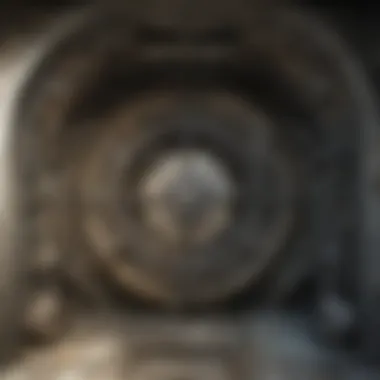

Background
Vault One, often seen as a cornerstone of the series' narrative, is infused with historical significance. Built under the pretense of protecting humanity from nuclear destruction, its design was ideal for conducting extensive human experiments. The unique feature of Vault One is its staggering commitment to survival theory. It became a beneficial example of how vaults were envisioned—not merely as refuges but instruments for societal observation. Yet, the result of this experiment raised critical questions about morality and governance.
Testing Procedures
The testing procedures at Vault One included an elaborate scheme involving cyclical isolation combined with random emergencies to gauge human reactions. This method is a key characteristic; it reflects Vault-Tec's interest in behavioral science, pushing the boundaries of human resilience and adaptability. One notable aspect of these procedures is the introduction of scarcity in the form of rationing. This was both an advantage for studying stress responses but also a disadvantage, risking the mental stability of the inhabitants as they faced intense pressures.
Outcomes
The outcomes of the experiments conducted in Vault One were mixed. Intense psychological strain led to unexpected results, such as the breakdown of social bonds and rise in paranoia among dwellers. This vault produced a unique fallout; its legacy serves as a cautionary tale about the potential dangers of manipulating human beings for the sake of knowledge. The outcomes provide valuable insights into human nature under duress, making Vault One a fascinating subject for any Fallout enthusiast.
Vault Two
Background
Vault Two was conceived during a time when societal upheaval was prevalent. Its key characteristic lies in its focus on community dynamics rather than individual performance. The planners aimed to create a balance in social structures. What stands out about Vault Two is the emphasis on cooperation which, while progressive for its time, led to complexities that unraveled as testing progressed. This helps frame our understanding of cohesion in survival scenarios.
Testing Procedures
In Vault Two, the testing procedures revolved around group interaction and resource distribution. Unique features in these procedures included mandatory communal activities designed to promote unity, yet they also led to discontent among those who preferred solitude. The advantages of these structured interactions were notable collaboration outcomes, but they often gave rise to internal conflicts. Thus, this testing regime highlights both the power of unity and the risk of collective manipulation.
Outcomes
As a result of its testing, Vault Two revealed the fragility of social contracts under pressure. The outcomes included a troubling rise in alliance-based conflict, where the strongest groups negated weaker individuals. This vault undeniable shows the darker sides of human nature and prompts reflection on the true meaning of community. In the narrative of Fallout, these outcomes serve as a stark reminder of the various ways society can fracture, even amid a clear external threat.
Vault Three
Background
Vault Three’s concept was concrete yet chilling: it was designed as a showcase of technologies that could withstand the worst of the apocalypse. The most noticeable aspect of its background is how it represented a culmination of technological aspirations juxtaposed against ethical boundaries. The vault design highlighted how technological advancements could be both a blessing and a curse for humanity.
Testing Procedures
Focusing on technological resilience, Vault Three's testing procedures incorporated a blend of high-tech simulations and physical challenges. A unique feature of this vault was the inclusion of virtual reality scenarios that tested dwellers’ responses to various catastrophic events. While these procedures were innovative, the immersive nature of technology raised ethical concerns regarding the authenticity of the dwellers' experiences, a fact that cannot be understated. The advantages of such technological trials are evident, yet the emotional toll on players can lead to philosophical dilemmas about reality versus simulation.
Outcomes
The outcomes from Vault Three directly correlating to technological and psychological revelations, indicated a split effect among the exploring dwellers. Many emerged equipped with impressive knowledge of technology but at the cost of their mental well-being. This vault’s legacy serves as a dual cautionary tale—on one hand, it showcases the progress humans can make when facing adversities, while on the other, it reveals the dangers of becoming too reliant on technology to define human experience. It thus resonates deeply in the Fallout narrative, illustrating a stark contrast between growth and decay.
The Fallout of Vault Experiments
The concept of vault experiments is integral to understanding the wider narrative threads woven throughout the Fallout universe. These testing sites, often considered mere remnants of past failures, hold keys to unraveling the psychological and sociological impacts of environment on the human mind. The fallout, both literal and metaphorical, from these experiments shapes not only the lives of the vault dwellers but also influences interactions in the post-apocalyptic world.
Psychological Effects of Isolation
Vaults were designed to shelter their occupants from the chaos of the outside world, but this safety came at a significant price. The isolation experienced by the dwellers has profound psychological consequences. Many vaults were built to test various social theories, but the prolonged confinement led to unexpected breakdowns in mental health.
For example, in Vault 37, the isolation and lack of external stimuli spurred a rise in anxiety and depression among its inhabitants. As the walls closed in, many residents found themselves grappling with feelings of hopelessness and despair. This phenomenon illustrates a critical aspect of the vaults: while their primary purpose was protection, the unintended consequences of such seclusion cannot be overstated.
"The mind, when starved of external interactions, finds creative ways to degrade itself."
In the depths of these vaults, one can observe how environmental factors—like artificial lighting, recycled air, and monotonous routines—trigger psychological decline. A stark contrast exists between the initial sense of security and the eventual physical and emotional toll it takes on the dwellers.
Impact on Vault Dwellers' Social Structures
The social fabric within vaults reflects intricate dynamics that evolved over time, particularly as isolation took hold. Any semblance of community cohesion eroded under the strain of the enclosed environment. Over time, vault dwellers developed unique social structures that often fluctuated between cooperation and conflict.
For instance, in Vault 11, which was designed for social engineering experiments, the pressure of sacrificial decisions led to a breakdown of trust among residents. These experiences contributed to a pervasive atmosphere of paranoia—where individuals were more concerned with self-preservation than collective well-being. This shift in social structure highlights how vault dynamics can turn from one of support to one of survival at all costs.
- Key factors affecting social structures in vaults include:
- Limited resources: Competition for food and supplies exacerbated tensions.
- Leadership struggles: Conflicting ideologies on governance often led to faction formation.
- Isolation-induced behavior: With nowhere to turn, some began to lash out, while others sought alliances out of necessity.
Through examining these intricate social landscapes, it becomes apparent that vault experiments did not just modify individual behavior; they sculpted a new societal architecture that reflects the worst—and sometimes best—of humanity in dire circumstances. Understanding these layers enhances the overall narrative depth of the Fallout series, showcasing how the fallout from vault experiments reverberates through the lives of every dweller and, ultimately, influences the world beyond their doors.
The Role of Vault Tests in Gameplay
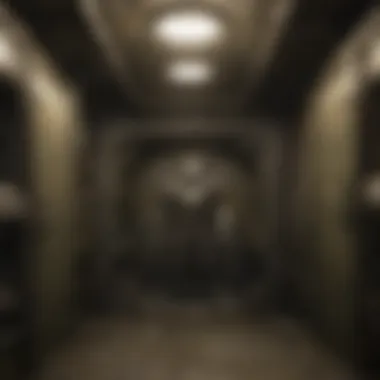
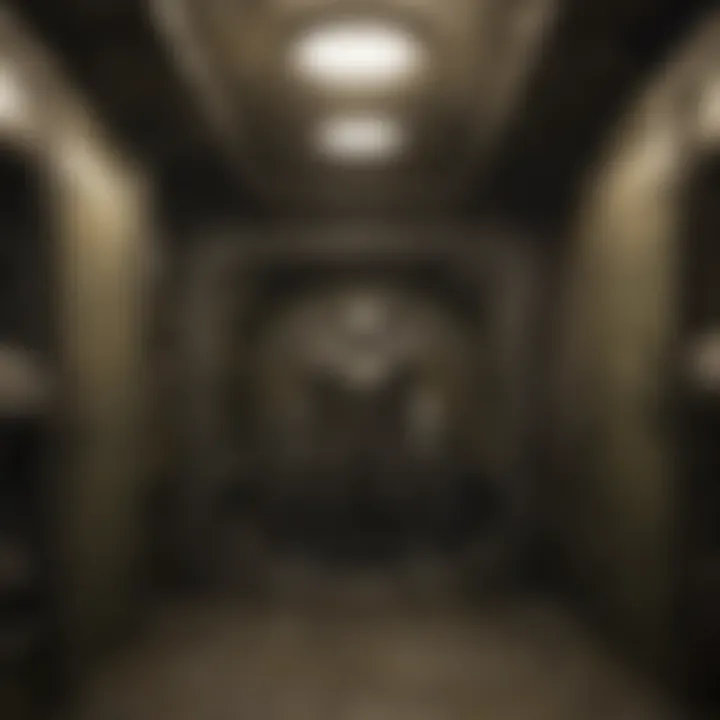
In Fallout, vault tests serve as pivotal elements that intricately weave into gameplay, creating a unique tapestry of challenges and discoveries for the player. Understanding the nuances of these tests not only enriches the gaming experience but also showcases how gameplay mechanics can influence storytelling and player decisions.
Player Interaction with Vaults
Vaults act as more than just immersive environments; they are interaction-rich areas that allow players to delve into the essence of the Fallout universe. As players explore these abandoned structures, they encounter a variety of scenarios, each presenting its own unique set of challenges. The testing environments compel players to engage thoughtfully with their surroundings, often requiring them to solve puzzles or make moral choices.
- Exploration: Players often find themselves rifling through the remnants of vault life, scavenging for resources while piecing together the narrative from scattered notes and audio tapes.
- Puzzles and Tasks: These vaults frequently hide intricate puzzles that leverage player intelligence and creativity. Each solution not only unravels a part of history but can also significantly affect the outcomes of future encounters in the game.
- Character Development: Interaction with vault dwellers, whether they are hostile or friendly, provides opportunities to shape the player's character and alliances. Decisions made here can ripple throughout the gameplay, influencing faction standings and future story arcs.
On a broader level, the vaults compel players to reflect on the consequences of human behavior, echoing real-world dilemmas of ethical decision-making. This interaction offers a fusion of gameplay and philosophical exploration, which is central to the charm of the Fallout series.
Narrative Implications for the Player’s Journey
Vault tests also serve as critical junctures in the storytelling arc. The narrative ramifications are profound, as experiences within these vaults often challenge players to confront their own morals, motivations, and ultimately their identities in the harsh wasteland.
Vaults represent a microcosm of civilization, encapsulating the complexities of societal structures and human psychology. They pose vital questions about survival, authority, and the very fabric of community.
- Character Growth: Players may find themselves on a path of self-discovery as they navigate these emotional and ethical mazes. Encountering diverse outcomes based on choices made during vault interactions allows for a customized experience, making each player's journey unique.
- Theme Exploration: Themes of isolation, betrayal, and resilience surface prominently within vault stories. Players might witness the fallout of what happens when scientific curiosity overrides human compassion.
- Worldbuilding: Each vault adds to the larger narrative landscape of Fallout, reinforcing the interconnectedness of the game world. These locations deepen the lore surrounding events leading up to the apocalypse, allowing players to piece together the broader narrative tapestry.
"The hidden tragedies of vault experiments beckon exploration. They don't just challenge players; they invite contemplation about choices and their long-lasting effects."
In sum, the role of vault tests in Fallout transcends mere gameplay; it is a vital mechanism through which players engage with both the environment and narrative. By mirroring real-world challenges and asking deep questions, vaults become crucial aspects of player growth and storytelling depth, solidifying their importance in the player's journey in this richly built universe.
The Legacy of Vault Testing Sites
The legacy of vault testing sites in the Fallout universe transcends mere architectural curiosities; they are crucial to understanding both the overarching narrative and the nuanced character development within the series. Each vault tells a story not just of survival but of humanity's flaws when facing formidable challenges. Their designs and experiments speak volumes about societal fears and moral dilemmas present in the pre-war era, yet they also serve as recurring themes that resonate through the gameplay mechanics and story arcs.
Cultural Significance in the Fallout Series
In many ways, vaults within Fallout are akin to modern-day folklore, woven deeply into the fabric of post-apocalyptic culture. They symbolize hope and despair, the quest for safety coupled with the haunting consequences of isolation. Since the inception of Fallout, players encounter vaults with a mix of curiosity and trepidation. The virtual space of the vault becomes a labyrinth of human behavior, showcasing diverse experiments that often explore ethical boundaries.
- Each vault operates like a microcosm of society, reflecting real-world issues, such as:
- Gender roles – as seen in Vault 69, where inhabitants were forced into an extreme social experiment designed to create a single gender population.
- Social hierarchy – as portrayed in Vault 11, where moral dilemmas led to harrowing choices amongst residents, questioning the cost of survival.
These narratives enrich the players' experience, as they unveil not just gameplay mechanics, but ethical questions that make them ponder the societal structures they live in.
"The vaults serve as a mirror held up to society, asking us not only what we are willing to do to survive but also what we lose in the process."
Influence on Future Game Design
The impact of vaults extends beyond Fallout's immediate story; they have become a standard against which other game designs are compared. As game developers create expansive worlds, the lessons learned from vault mechanics can be seen shaping gameplay elements in various genres. The innovative challenges and intricate storylines pioneered by the original Fallout games have defined gameplay elements today.
For instance:
- Vaults introduced players to:
- Explorative narratives that reveal lore through environmental storytelling, a technique now prevalent in many RPGs.
- Choice-based mechanics—players' decisions often alter the course of their undertakings within the vaults, leading to a multiplicity of endings that enhance replay value.
These design principles have influenced not only Bethesda's titles but also the broader gaming landscape, as more developers seek to weave intricate narratives within their worlds, creating spaces for players to make meaningful decisions impacting the game’s future.
Finale: Reflecting on the Vault Experience
As we wrap up our journey through the vault testing sites in the Fallout universe, it’s clear that the significance of these locations transcends mere gameplay. They serve as a reflection of humanity's flaws, ethics in science, and social dynamics under pressure. Each vault stands as a microcosm of society, testing the boundaries of human nature amidst chaos.
Summarizing the Lessons of Vault Testing
The vaults offer many key insights that are worth our attention. From the social engineering experiments to behavioral tests, players are challenged to consider the moral implications of each test conducted.
- Survival vs. Ethics: What happens when survival instincts clash with moral values? This is a question that haunts players throughout the series.
- Manipulation and Escape: Many vaults had deceptive designs intended to manipulate the behavior of their inhabitants. Players learn about the profound effects of isolation and how forced experimentation can warp societal norms.
- Community Structures: The varied outcomes reveal how community structures can be fragile, easily collapsed under pressure or, paradoxically, transformed into unexpected forms of resilience.
Through these narratives, players gain a richer understanding of what it means to survive and thrive, not just physically, but emotionally and socially.
The Future Landscape of Fallout Game Lore
Looking ahead, the legacy of vault testing will undoubtedly play a crucial role in shaping future Fallout narratives. Given the ongoing fascination with these vaults, we can anticipate several important trends:
- Deeper Psychological Elements: Future installments may delve further into the psychological aspects of vault living. Expect more complex characters shaped by their vault experiences.
- Expanded Lore: Developers might introduce new vaults with unique characteristics and outcomes, enriching the universe and providing players with endless storytelling possibilities.
- Player Choices: The influence of player decisions should intensify, reinforcing the connection between choices made in gameplay and their larger implications on the world around them.
As Fallout continues to evolve, the themes presented through the lens of vault testing serve as a rich well for exploration. The social experiments, ethical dilemmas, and their far-reaching effects will remain salient points of discussion among the fans, ensuring that the experiences we gather from these vaults will echo through gaming history.
In the grand tapestry of the Fallout narrative, vault testing sites are not mere footnotes but rather foundational elements that shape the experience of every player.
Embracing these insights not only deepens the connection to the series but also invites fans to reflect on the larger questions about society, survival, and the human condition. The vault experience ultimately becomes a mirror, reflecting not just the interests of the game developers but also the intricacies of our own world.







